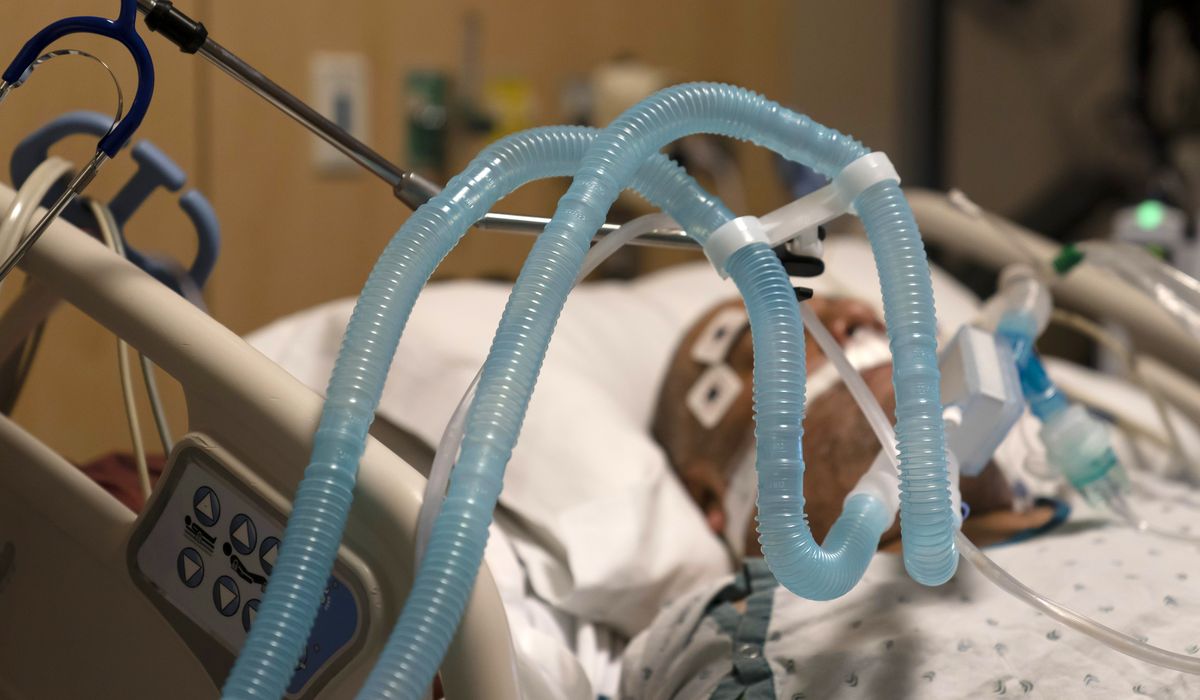The U.S. is on pace to record 400,000 more deaths for 2020 than it did in 2019, driven by COVID-19 and problems that go beyond the coronavirus but were rekindled by the pandemic, including disrupted care for other diseases and mounting drug overdoses.
Preliminary data shows 3.2 million people died in 2020 compared with about 2.8 million in 2019. Although deaths tend to rise with the aging population each year, a nearly 15% increase is highly unusual and driven by COVID-19, which killed more than 335,000 people by New Year’s Eve and 350,000 so far in the first week of January.
COVID-19 doesn’t appear to have replaced deaths from other causes. In fact, many of those causes rose rather than being displaced during the pandemic. That includes 40,000 more Alzheimer’s disease deaths and nearly 15,000 more diabetes deaths than statistically predicted since Feb. 1, according to the Centers for Disease Control and Prevention.
Deaths from circulatory diseases such as heart failure and hypertension are also up.
The reason for excess deaths is likely “a combination of undiagnosed COVID deaths, including sudden deaths, and some people neglecting their health care — but more the former,” said Peter Hotez, dean of the National School of Tropical Medicine at the Baylor College of Medicine.
Experts say mislabeled COVID-19 deaths were likely more common early in the pandemic, when testing was hard to find.
The year-to-year jump in mortality is the largest since 1918. Deaths increased a whopping 46% that year because of World War I and the flu pandemic, according to the Associated Press.
More than a century later, it is the novel coronavirus from Wuhan, China, that is sending the numbers off the charts.
The first deaths were recorded in February on the West Coast. The outbreak exploded in the Northeast last spring before subsiding during nationwide lockdown orders. COVID-19 outbreaks crested again in the Sun Belt and slammed the Midwest later in the year.
In the new year, the virus is widespread and killing more than 2,500 people per day, on average, in the U.S.
Federal data shows roughly one-third of COVID-19 deaths occur in those 85 or older and less than 5% occur in those younger than 50.
Males account for a greater share of deaths, at 54% versus 46%, according to partial data from the CDC. Black Americans account for roughly 12% of the U.S. population but nearly 17% of COVID-19 deaths. Hispanics have a bigger proportion of cases (nearly 22%) than their share of the population (about 18%) but a lower share of deaths (13.5%).
The U.S. case fatality rate, the share of people who test positive for COVID-19 and then die, is improving and is down to 1.6%. That puts the country on better footing than Mexico (nearly 9%), Italy (3.5%) and the United Kingdom (2.8%).
Yet the virus is so widespread in the U.S. that diagnosed COVID-19 cases that don’t prove deadly provide a bigger denominator and drive the case fatality ratio, while the death toll continues to soar.
The U.S. is recording more than 107 deaths per 100,000 people, putting it in better stead than the U.K. (113) and on par with Spain (108) but far worse than Germany (42), India (11) and South Korea (2).
Transmission remains elevated, with an average of over 200,000 reported cases per day. The situation worsened after Thanksgiving and again after Christmas, prompting governors and leaders of other countries to issue a series of lockdown measures to control the spread.
The CDC said it doesn’t have data yet on whether car crash fatalities are down because fewer people are driving, nor has it tallied suicide data.
All year, the Trump administration and some experts have worried about a jump in deaths from despair because of a lack of social interaction. Suicide calls are up slightly compared with earlier years, and gun sales have increased — firearms are used in most suicides — prompting fears that the trend moved in the wrong direction, according to a November report by the Brookings Institution.
“Everyone’s been concerned generally about depression and feeling down because of the isolation,” said William Schaffner, an infectious diseases specialist at Vanderbilt University. “That’s opened up recently. People are traveling and gathering in groups, contrary to recommendations, so some of that may have been ameliorated, and we’ll have to look at that over time.”
Officials also are worried about drug overdoses.
More than 81,000 fatal overdoses were reported in the 12 months ending in May, the most on record. The rate was accelerating before the COVID-19 outbreak, but the CDC thinks the pandemic exacerbated the problem.
“The disruption to daily life due to the COVID-19 pandemic has hit those with substance use disorder hard,” CDC Director Robert Redfield said in mid-December. “As we continue the fight to end this pandemic, it’s important to not lose sight of different groups being affected in other ways. We need to take care of people suffering from unintended consequences.”
Experts say social distancing prompted by the pandemic probably worsened the U.S. opioids crisis. Those who overdose have a better chance of survival if someone is nearby to call paramedics, according to a December working paper from Casey Mulligan, an economics professor at the University of Chicago.
Although supply disruptions might have raised prices and limited the availability of heroin, he wrote, “the market may respond by mixing heroin with more fentanyl and other additives that make each consumption episode more dangerous.”
The pandemic also is blocking access to treatment and other help.
“COVID makes face-to-face indoor interactions more dangerous, which has made accessing professionally provided treatment and peer-led mutual help groups more difficult,” said Keith Humphreys, a Stanford University professor who tracks the opioids problem. “This lowers the number of actively addicted people who will stop using and increases the number of people in early recovery who relapse.”



















